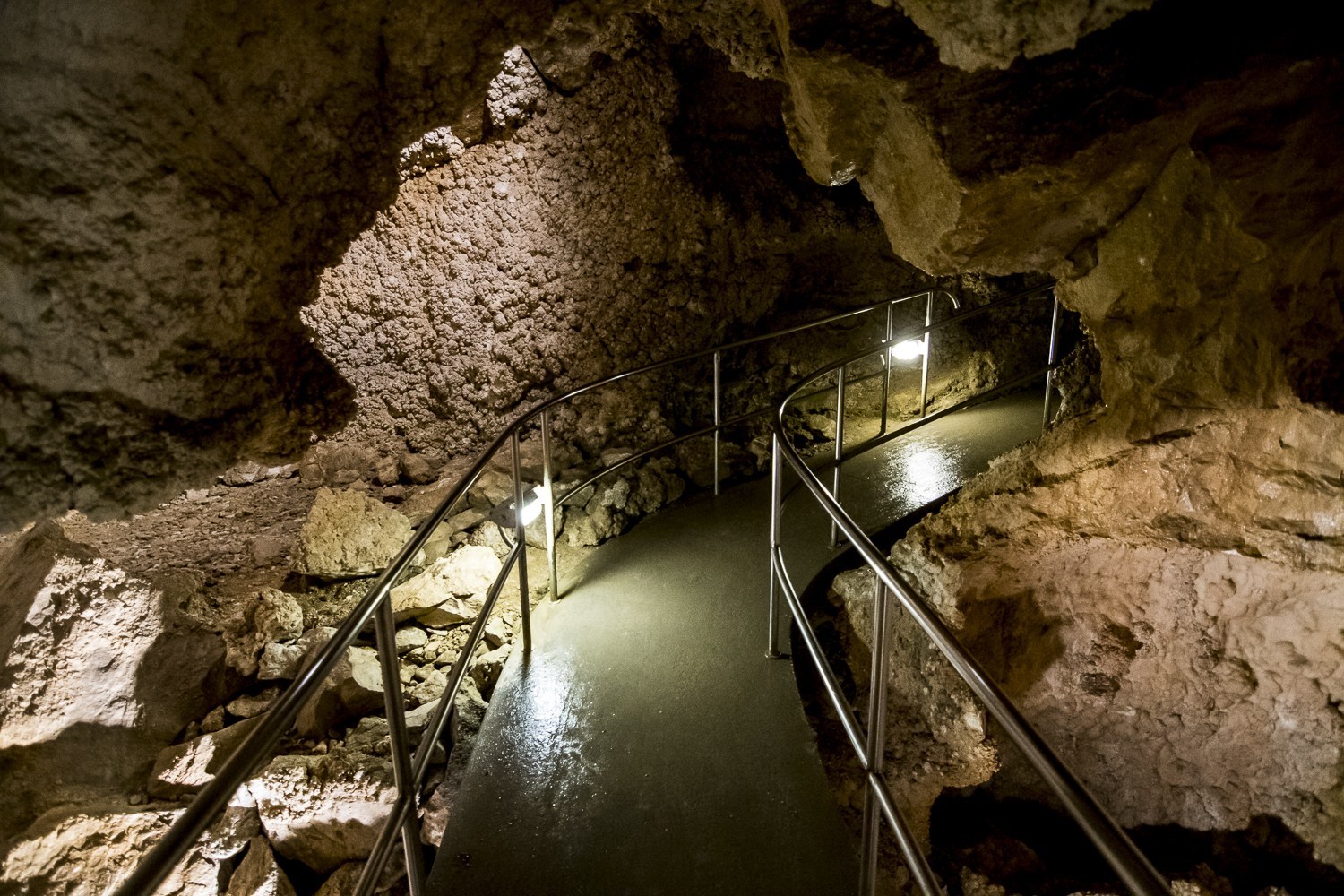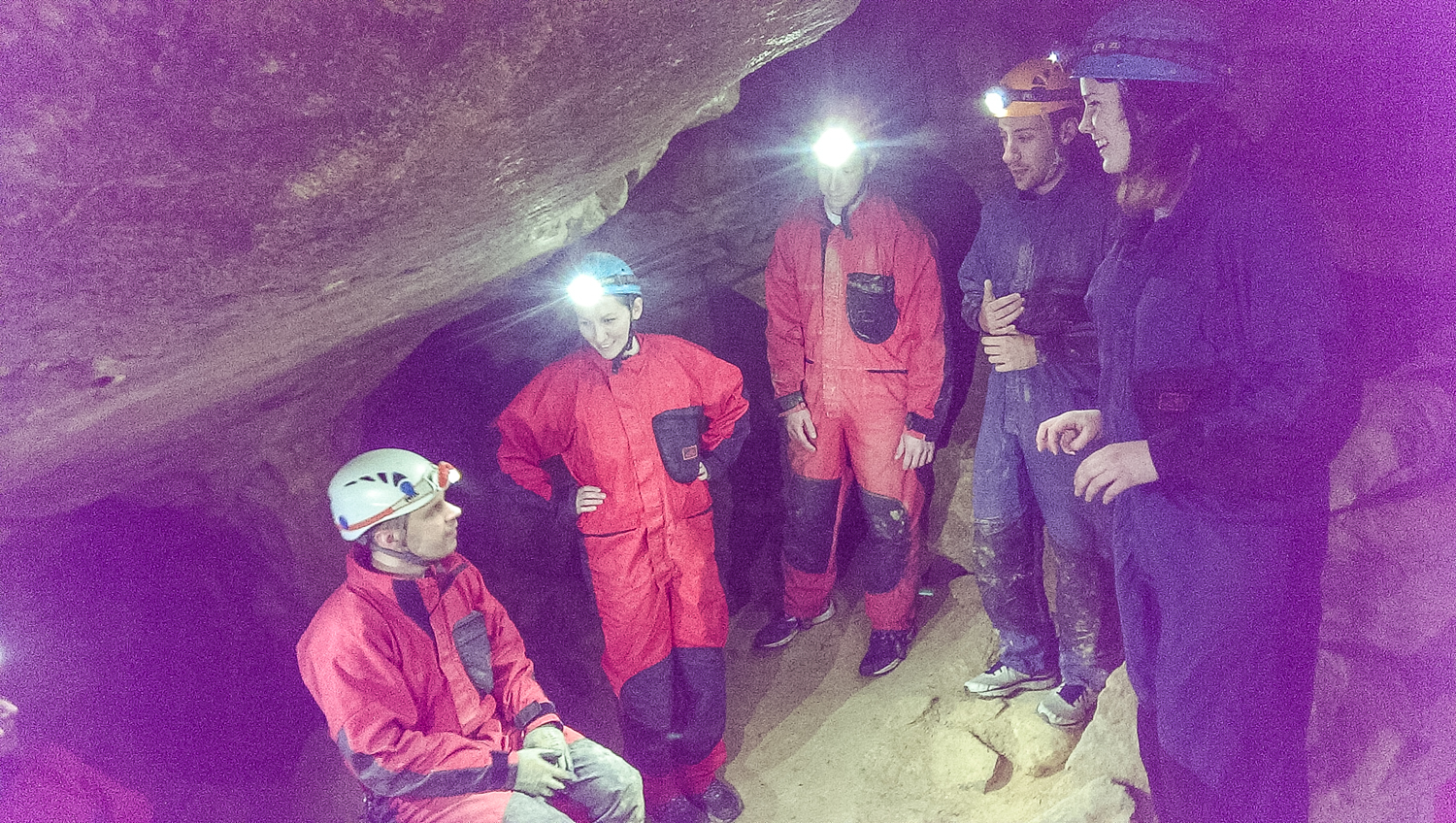2/3
Tucked into the hillside above Kolosy tér in Óbuda, Szemlő-hegyi Cave features stone roses, pisolite and gypsum crystals, supporting the thermal water origin of the cave. Thanks to the air’s nearly 100% humidity and 12- degree temperatures, speleotherapy sessions have been held here since 1990. The entrance area is now surrounded by a buffer zone, where hikers can enjoy slides, a jungle gym, benches and a geological study trail. All kinds of obstacle courses can be tried, such as rope technology or ‘Climbing the Needle’, but the less brave can also choose from a variety of interactive attractions. The cave, partly accessible for the physically challenged, can be visited only within the framework of an hourly tour. You may buy a combined ticket to continue your adventure at the nearby Pál-völgy Cave.







